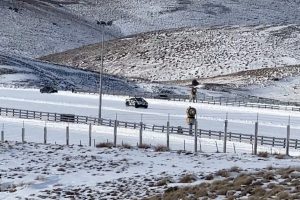- ⚙️ Tesla is considering a major change to its Autopilot suite for vehicles equipped with a Yoke.
- 🚗 The existing Autopilot features include Traffic-Aware Cruise Control and Autosteer as standard.
- 📉 Elon Musk suggests the Yoke should remain stationary when on Autopilot, as it is not mechanically linked to the wheels.
- 🔄 The concept may be implemented first in the Cybertruck due to its steer-by-wire system.
- ⚠️ Concerns arise about driver intervention challenges if the Yoke is non-responsive during emergencies.
- 🚀 Tesla aims for fully autonomous driving in the future, but this development is still years away.
In the fast-paced realm of automotive innovation, Tesla remains at the helm, spearheading groundbreaking advances in vehicle automation and design. The recent buzz surrounding major changes to Tesla’s Autopilot operation for vehicles equipped with a Yoke Steering has caught the attention of Tesla enthusiasts and the broader tech community alike. In this blog post, we delve into the nuances of this potential transformation, examining its implications, challenges, and possibilities for the future of driving.
Tesla’s Autopilot: A Brief Overview
Before diving into the changes, it’s crucial to understand the existing Autopilot features powering Tesla’s vehicles. These features include:
- Traffic-Aware Cruise Control: This system uses vehicle sensors to maintain a safe distance between your car and others on the road, ensuring an optimal speed relative to surrounding traffic.
- Autosteer: Working in tandem with Traffic-Aware Cruise Control, Autosteer aids in maintaining the vehicle within its designated lane, providing a foundational layer of automated driving.
A Stationary Yoke: Elon Musk’s Vision
Tesla CEO Elon Musk has suggested a revolutionary approach to the Yoke Steering Wheel — keeping it stationary during Autopilot operations. Traditionally, when a vehicle is under Autopilot, the steering wheel moves as it adjusts the vehicle’s trajectory. Musk’s vision to have a stationary Yoke, which is not mechanically linked to the wheels, suggests that steering adjustments would be handled entirely by the vehicle’s onboard systems.
Why the Change?
- Technological Advancement: The idea aligns with Tesla’s ethos of pushing technological boundaries. By decoupling the steering mechanism from the motion of the wheels, Tesla can potentially refine the driving experience.
- Cybertruck Implementation: The Cybertruck, with its steer-by-wire system, is perfectly poised to test this concept. This system allows for electronic, rather than mechanical, steering control, paving the way for more advanced automation strategies.
Potential Challenges and Concerns
While the proposal is exciting, it does raise concerns, especially about driver intervention. Here are some of the key challenges:
- Driver Safety and Intervention: One major concern is how easily a driver can override the system during emergencies if the Yoke does not align with the wheel direction. This misalignment could hinder intuitive driving responses.
- Navigating User Perceptions: Ensuring driver confidence and trust in a stationary steering device will require clear communication and possibly extensive user education.
The Road to Full Autonomy
Tesla continues to walk the line between innovation and practicality, aspiring for a future of fully autonomous vehicles. While this goal remains on the horizon, the proposed Yoke design change offers a glimpse into how evolutionary steps in technology may impact driving.
Final Thoughts
The potential shift to a stationary Yoke for Tesla’s Autopilot system reflects the company’s commitment to redefining driving as we know it. It reinforces the harmonious blend of cutting-edge technology and forward-thinking design. As this concept progresses, it will be intriguing to observe its adoption and impact within the automotive world.





